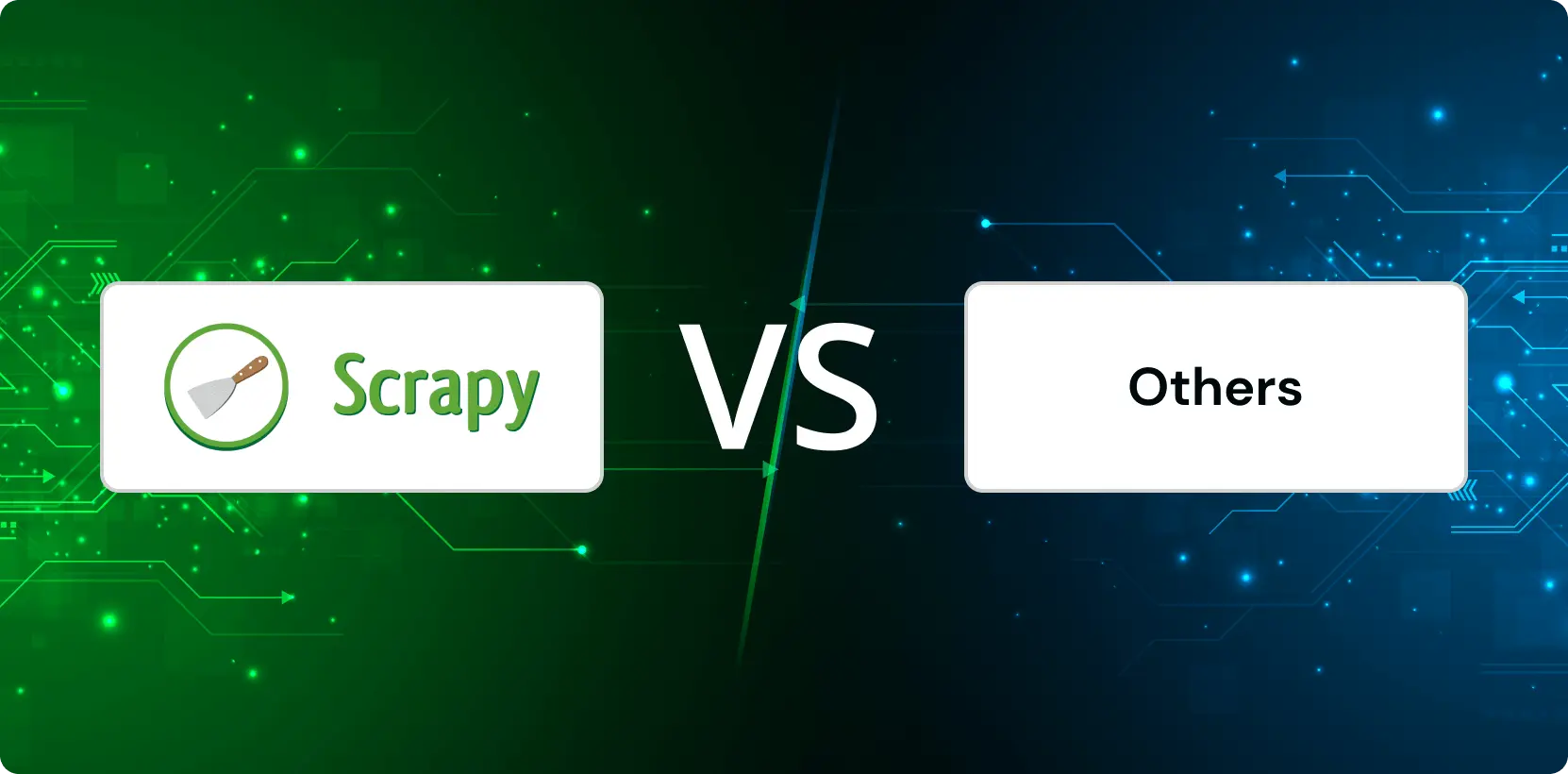In our increasingly data-driven world, the ability to efficiently extract information from the web is paramount for businesses, researchers, and tech enthusiasts alike.
Web scraping, the art of harvesting data from websites, has become a pivotal skill in this context. Scrapy is a modern, open-source framework tailored for this very task. Designed for both novices and experts, Scrapy offers a versatile toolset that streamlines the data extraction process, making the often daunting task of web scraping more approachable and efficient. This article aims to delve into the intricacies of Scrapy, highlighting its features, applications, and how it stands out in the vast sea of web scraping technologies.
Background and Development
Web scraping has grown considerably since the early days of the internet, evolving from manual data collection to the automation we see today. Initially, tools were basic and required intensive coding, making it inaccessible to many. Scrapy was developed by Insophia in 2008 for their internal projects, and it was later open-sourced, quickly becoming a game-changer for data enthusiasts. Designed explicitly for web scraping, Scrapy addressed its predecessors’ challenges, offering a robust, extensible, and efficient platform. Its emergence bridged the gap between basic and advanced scraping tools, making web data extraction more streamlined and user-friendly.

Core Features of Scrapy
Modularity and Extensibility: Scrapy’s modular architecture allows developers to plug in custom components seamlessly. This extensibility ensures that Scrapy can be tailored to fit various scraping requirements.
Middleware Support: Middleware in Scrapy provides hooks to process both inbound and outbound requests and items, enhancing its functionality. This makes it adaptable to various scenarios, such as handling cookies, user-agent spoofing, or processing data.
Built-in Exporters: Scrapy has built-in exporters that make data export hassle-free. It supports multiple formats, such as JSON, CSV, and XML, ensuring easy integration and further data processing.
These features showcase Scrapy’s flexibility and adaptability as a modern web scraping tool.
Setting Up and Using Scrapy
Setting up Scrapy is like setting up a new app on your phone. First, you download and install it on your computer. Once it’s there, you can gather information from websites, just like asking a helper to make a list of things for you. You type in specific instructions, and Scrapy follows them, returning the info you requested. If you run into problems, there are plenty of online guides to help you out.

Scrapy vs. Other Web Scraping Tools
- Scrapy
Strengths: A robust and comprehensive framework explicitly designed for web scraping that offers extensibility, built-in functionalities for data extraction, and a pipeline for post-processing data. Ideal for large-scale scraping tasks.
Weaknesses: The main drawback of Scrapy is its inability to handle dynamic websites natively, i.e., websites that use JavaScript (React, Vue, etc.) to render content as and when needed.
- BeautifulSoup
Strengths: User-friendly and great for beginners or small scraping tasks. It can parse HTML and XML documents and easily navigates a website’s structure.
Weaknesses: It’s just a parsing library; an additional library-like requests is needed for downloading web pages. Less efficient for large-scale scraping.
- Selenium
Strengths: Interacts with websites similarly to a human using a web browser. Excellent for scraping websites that heavily rely on JavaScript.
Weaknesses: It is slower than other tools because it loads the entire web browser and consumes more resources.
- Puppeteer
Strengths: A headless Chrome browser provided by Google, ideal for capturing web pages as they appear in real-time and for JavaScript-heavy sites.
Weaknesses: Being a full-fledged browser tool, it’s heavier and slower than lightweight scraping libraries. Using Puppeteer requires a good understanding of asynchronous JavaScript. Indeed, while Scrapy stands out as a powerful and dedicated web scraping framework, the right tool often depends on the task’s specifics, the website’s complexity, and the user’s proficiency with the tool’s language.

Practical Applications of Scrapy
- Data Mining: Scrapy enables businesses to extract vast datasets from various websites for analytics and decision-making processes—for instance, trend analysis in fashion by scraping multiple apparel sites.
- Automated Testing: Web developers can leverage Scrapy to periodically test website functionalities, ensuring that links work and the content loads as expected.
- Price Monitoring: E-commerce businesses utilize Scrapy to monitor competitor websites for price changes, helping them stay competitive and adjust their pricing strategies.
- Content Aggregation: Bloggers and news websites can use Scrapy to aggregate content from multiple sources, providing a curated feed for their audience and ensuring fresh and relevant content.
- Job Board Monitoring: Recruitment agencies and HR departments can automate finding job postings by scraping job boards and corporate websites, ensuring they are always updated with the latest opportunities.
Each application showcases Scrapy’s versatility and potential in streamlining tasks and gathering essential data from the web.
Ethical Considerations
Respecting robots.txt: Always adhere to a website’s robots.txt file, which specifies which parts of the site can be accessed and scraped.
Avoid Server Overload: Implement rate limiting and staggered requests to prevent overwhelming a website’s server, ensuring the site remains accessible to other users.
Transparent User Agents: Ensure your scraping bot’s user agent is transparent about its intentions and possibly provides contact information.
Frequency: Limit scraping frequency to avoid being perceived as a potential threat or spam, ensuring the longevity of your scraping activities without raising flags.
These considerations emphasize the importance of ethical web scraping, ensuring that the scraper and the website owner’s rights and intentions are respected.

Future of Scrapy and Web Scraping
As the digital realm expands, Scrapy continues evolving to meet modern web challenges, emphasizing efficiency, versatility, and user-friendliness. The increasing prevalence of JavaScript-heavy websites necessitates Scrapy’s adaptability to dynamic content.
Meanwhile, web scraping’s future is shaped by the proliferation of API-first web services, implying a shift from traditional scraping to API integrations. Nevertheless, the demand for raw and niche data ensures that web scraping remains relevant. Tighter data privacy and access regulations are also anticipated, emphasizing ethical and responsible scraping practices. As the digital landscape transforms, tools like Scrapy must pivot adeptly, ensuring data accessibility while upholding integrity and respect for web resources.
Conclusion
Scrapy is a testament to the evolving world of web scraping, combining efficiency with versatility. In an era where data drives decisions, tools like Scrapy have become indispensable. While multiple tools are available for web scraping, Scrapy’s unique features and robust architecture set it apart. For anyone embarking on a data extraction journey, Scrapy is undeniably a technology worth mastering. As with any tool, its ethical and respectful use is paramount. With the right approach, Scrapy opens doors to a vast expanse of web-based knowledge waiting to be harnessed.






